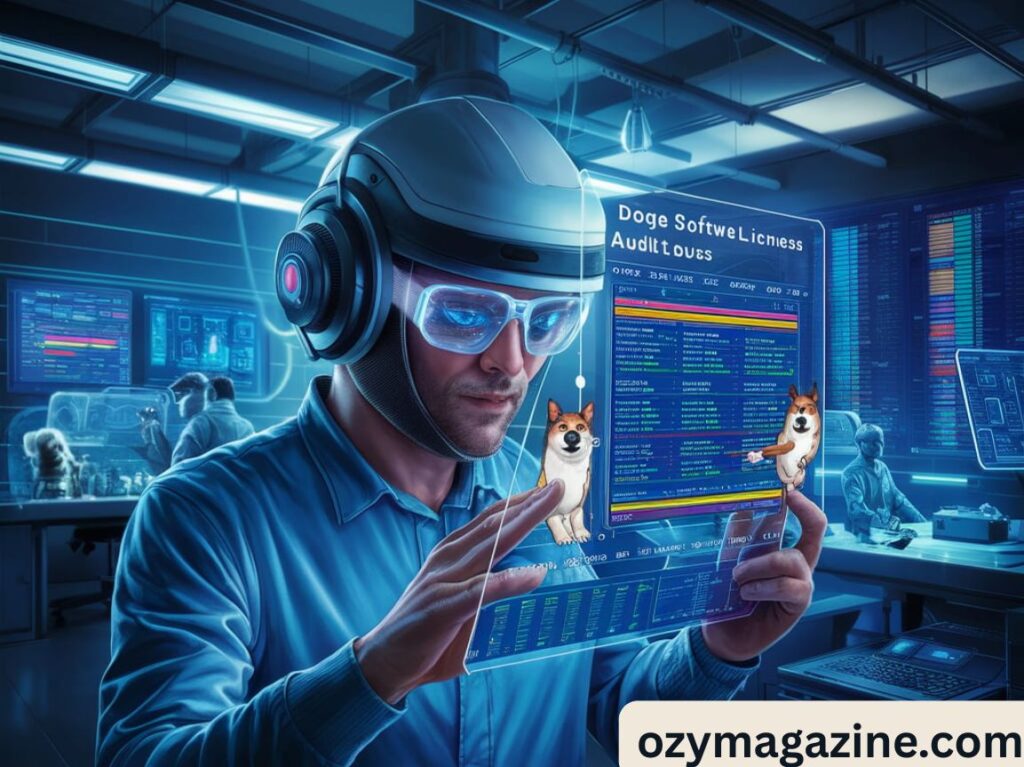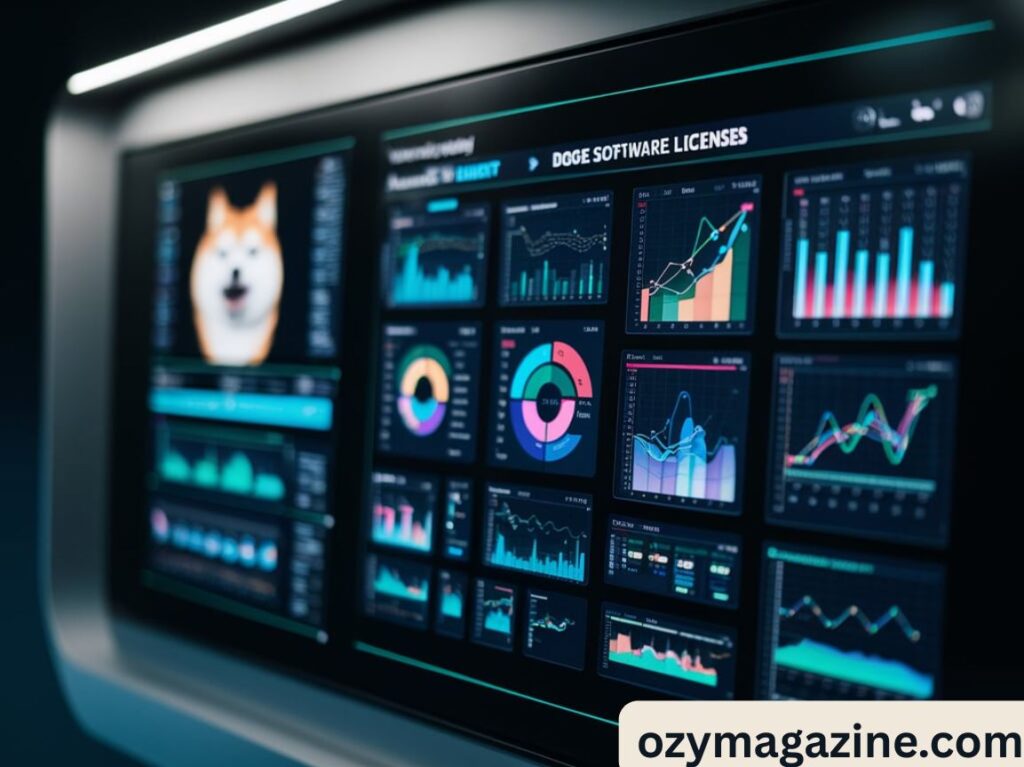Doge Software Licenses Audit HU is a way to check how companies use their software licenses. It helps find out if licenses are used well or wasted. This audit shows if a business is following software rules.
Many companies spend too much on software they don’t need. This wastes money and causes problems. Learning about Doge Software Licenses Audit HU can save your business money and keep it safe.
The audit looks at software use and finds mistakes in license tracking. It helps companies avoid fines from software makers. Doge Software Licenses Audit HU is important for managing costs and staying legal.
What the Audit Revealed
The Doge Software Licenses Audit HUD was designed to analyze how companies use their software licenses. The audit uncovered some eye-opening facts about license management in the US. One of the key findings was that many businesses either buy more licenses than they need or under-utilize the licenses they already own. For example, the audit showed that on average, companies waste about 30% of their software licenses because they don’t track usage properly or fail to remove licenses from employees who no longer need them.
The audit also revealed a lack of standard processes for license management across many organizations. This lack of consistency leads to difficulties during compliance checks and can cause unexpected costs. Many companies reported being surprised by how much they were spending on unused or unnecessary licenses. The audit highlighted that with proper monitoring and governance, companies could reduce their software costs significantly.
In the US market, where software budgets are among the highest globally, this wasted expenditure translates to millions of dollars lost annually. The audit’s findings show that there is a big opportunity for US businesses to optimize their software spending by adopting better license management practices.
Why Software Waste Happens

Software waste happens for many reasons, but mostly it comes down to lack of visibility and poor management. Many US businesses purchase software licenses in bulk, assuming future growth or potential need. However, when employees leave the company or change roles, licenses often remain assigned even if not in use. This leads to licenses sitting idle, essentially wasting money.
Another reason for software waste is the complex licensing models offered by software vendors. These models can be confusing, making it hard for companies to understand exactly what they are paying for and how to track it correctly. For example, some licenses are user-based, some are device-based, and others are subscription-based. If a business mixes these models without proper tracking, it can easily end up with more licenses than necessary.
In addition, the culture in many organizations does not prioritize license management. IT teams are often busy handling day-to-day tasks and may not have the time or tools to review software usage regularly. Without clear ownership of license management, waste is almost guaranteed.
A real-life example comes from a mid-sized tech company in California that spent over $200,000 annually on licenses for software that only a fraction of their employees used. After conducting a thorough review inspired by the Doge Software Licenses Audit HUD, they were able to cut costs by 40% within one year.
The Value of Regular License Reviews
Regular license reviews are crucial for keeping software costs under control and avoiding compliance risks. When companies take the time to audit their licenses regularly, they can identify which licenses are not being used and can be canceled or reassigned. This helps reduce unnecessary expenses and frees up budget for other critical projects.
A license review also helps companies stay compliant with vendor agreements. Software vendors often conduct their own audits, and if they find discrepancies, companies can face hefty fines and legal troubles. The Doge Software Licenses Audit HUD shows that businesses that conduct internal reviews regularly are better prepared and less likely to be penalized.
In the US, regulatory compliance is especially important for industries like healthcare, finance, and government. For instance, under HIPAA and SOX regulations, companies must prove that they manage software licenses carefully to protect sensitive data. Regular reviews create transparency and help meet these regulatory requirements.
To carry out effective reviews, companies should use automated tools that track software installations and usage across all devices. They should also set up a schedule, such as quarterly or bi-annual reviews, to ensure that license management is part of their routine business process.
Common Pitfalls in License Reporting
One of the biggest challenges in license management is accurate reporting. The Doge Software Licenses Audit HUD revealed that many US companies make mistakes when reporting their license usage. These mistakes include collecting incorrect data, misunderstanding license terms, and delayed reporting.
For example, some companies rely on manual data entry to track licenses, which often leads to human error. Others fail to update their records when employees leave or when software is installed on temporary devices. These errors create gaps in the reporting, which can cause compliance issues during audits.
Another common problem is misunderstanding the fine print of licensing agreements. Many IT managers are not fully aware of the specific terms of their licenses, such as restrictions on concurrent users or geographic limitations. This lack of knowledge can cause accidental breaches of contract.
Additionally, reporting delays can harm the accuracy of audits. If a company waits too long between reports, they may miss important changes in license usage, leading to outdated or misleading data.
Addressing these pitfalls requires investing in reliable software asset management (SAM) tools and training staff to understand licensing agreements better. The Doge Software Licenses Audit HUD stresses that improving reporting accuracy is key to successful license management.
Governance and Security Concerns
Software licenses are not just about money; they also tie directly into governance and security. Poor license management can lead to governance problems, where companies lose control over who can use which software and for what purpose. This loss of control creates risks for the organization.
From a security standpoint, unauthorized or untracked software usage can introduce vulnerabilities. Unlicensed software may not receive critical updates or patches, leaving systems open to cyberattacks. In the US, where data breaches can lead to massive fines and reputational damage, managing licenses properly is part of a strong cybersecurity strategy.
Governance frameworks help organizations set clear rules for software use, assign ownership of license management, and ensure compliance with laws and industry standards. For example, companies in healthcare must follow strict HIPAA guidelines, and software compliance is part of those requirements.
The Doge Software Licenses Audit HUD showed that companies with strong governance are more successful at maintaining security and compliance. They use policies to control software deployment and automate license tracking, reducing the risk of unauthorized access and non-compliance.
Best Practices for Managing Licenses

To manage software licenses effectively, companies should adopt several best practices. First, they need to create clear policies that define who can request, approve, and use software licenses. Assigning accountability to specific roles ensures that license management doesn’t fall through the cracks.
Using automation tools is another essential practice. Software asset management (SAM) solutions can monitor license usage in real time, send alerts when licenses are under or over-used, and provide detailed reports. Automation reduces manual errors and makes managing licenses easier.
Training employees is equally important. When staff understand why license management matters, they are more likely to comply with policies and avoid unauthorized software installations.
A US-based financial services firm improved their license management by implementing these best practices. After adopting SAM software, they reduced compliance risks and saved over $500,000 in software costs within two years. They also improved their audit readiness, passing vendor audits with no penalties.
Read Also : 5starsstocks.com Stocks: Is It Worth Your Attention?
Measuring Success in License Management
Measuring success in license management is essential to know if your efforts are working. Key performance indicators (KPIs) such as percentage of licenses utilized, cost savings from decommissioned licenses, and compliance rates are useful metrics.
For example, tracking license utilization helps identify waste. If only 70% of licenses are used regularly, the company knows there is room to reduce costs. Cost savings metrics show how much money has been saved by better management. Compliance rates indicate how well the organization is meeting vendor and legal requirements.
Many US companies use dashboards provided by SAM tools to monitor these KPIs. This continuous feedback allows them to adjust policies and practices promptly. The Doge Software Licenses Audit HUD encourages organizations to treat license management as an ongoing process rather than a one-time event.
What the Doge Software Licenses Audit HUD Uncovered
The Doge Software Licenses Audit HUD revealed significant inefficiencies in how US businesses manage their software licenses. Many organizations are either over-licensed or unaware of unused software, resulting in wasted expenses.
This audit highlighted the need for better visibility into license usage. By understanding the exact usage patterns, companies can avoid overspending and improve compliance with vendor agreements.
Reasons Behind Software License Waste in US Companies
Software license waste often happens because licenses stay assigned to inactive users or unused devices. Businesses sometimes purchase licenses in bulk without accurate tracking or reassessment.
Confusing licensing models and lack of proper tools make it hard to monitor license use. Without a clear process, companies struggle to optimize license distribution, leading to unnecessary costs.
The Importance of Conducting Regular License Audits
Regular license audits help organizations maintain control over their software usage. These reviews ensure that licenses are used efficiently and unused licenses can be reclaimed or reassigned.
Frequent audits also prepare businesses for vendor inspections, minimizing compliance risks. In the US, staying audit-ready is vital to avoid costly penalties and legal challenges.
Common Reporting Mistakes That Cause License Management Issues
Many companies fail in license reporting due to inaccurate data collection or misunderstandings of license terms. These errors can lead to compliance problems and unexpected expenses.
Additionally, delayed or incomplete reporting creates gaps that vendors might flag during audits. Addressing these issues with better tools and training is essential to maintain accurate records.
How License Governance Supports Security and Compliance

Strong governance ensures proper software use and protects sensitive data from unauthorized access. Poor license management can create security risks by allowing untracked or illegal software installations.
In regulated US industries, governance policies help meet legal requirements such as HIPAA and SOX. Effective license governance is a key part of a broader cybersecurity and compliance strategy.
Proven Best Practices for Effective License Management
To manage licenses well, companies should combine clear policies with automation tools. Assigning accountability for license tracking ensures consistent management across the organization.
Educating staff about license rules and usage benefits compliance and reduces waste. Many US businesses have cut costs and improved audit readiness by adopting these best practices.
Conclusion
Understanding Doge Software Licenses Audit HUD Explained is a vital step for US businesses to improve their software license management. The audit reveals how common license waste is, why it happens, and how regular reviews can prevent costly mistakes. Avoiding pitfalls in license reporting, strengthening governance and security, and adopting best practices will help companies save money, reduce risk, and stay compliant.
For any business using software in the US, the lessons from this audit are clear: license management is not optional—it is a critical part of maintaining operational and financial health. Embracing these insights can transform software spending from a hidden cost into a controlled and optimized asset.










